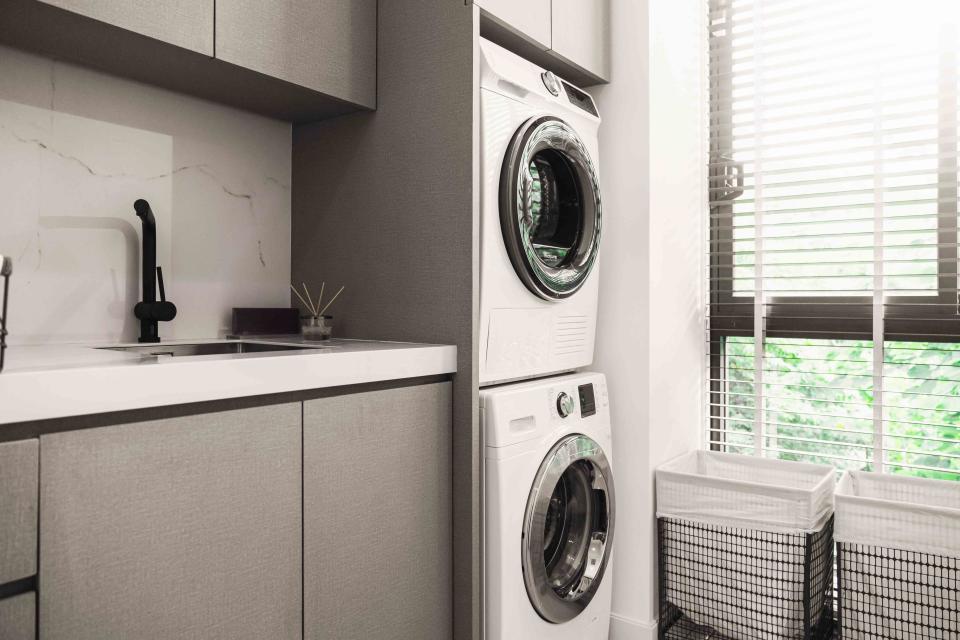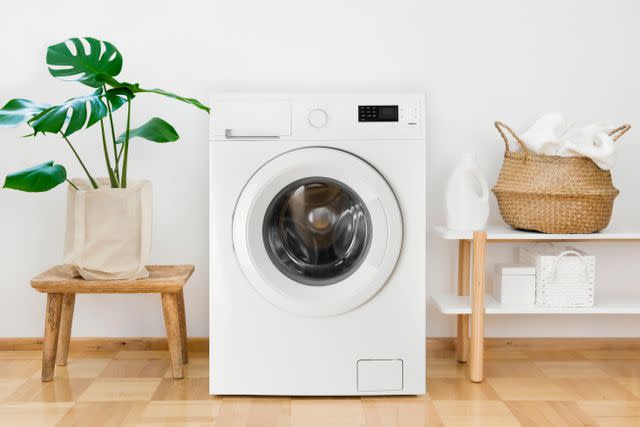The Difference Between Top-Load and Front-Load Washers: Is One Better Than the Other?
The two machines have more differences than appearance alone.

whyframestudio / GETTY IMAGES
If you're in the market for a new washing machine, you're likely wondering what the difference is between a front-load and top-load washer. Beyond appearance, there are quite a few distinctions between the two appliances, from their cleaning power to their energy efficiency. To ensure you're choosing a washer that lives up to your specific laundry needs, we're sharing the key differences between top-load and front-load washers.
Meet the Expert
Dan Galinsky, laundry merchant for the Home Depot
Morgan LaLonde, laundry brand manager for Whirlpool
Related: The Best Way to Clean Your Washing Machine
What Is a Front-Load Washer?
A front-load washer allows you to load the clothes from the front of the machine. "Front-load washing machines have tubs that spin horizontally, making them easier to load and unload wash items," says Dan Galinsky, laundry merchant for the Home Depot.
What Is a Top-Load Washer?
A top-load washer lets you load clothes from the top of the machine, and either uses an agitator or an impeller to clean clothes. "Agitator model washing machines have a vertical post in the center that rotates with a downward force and rubs against the load to break down dirt and stains," says Galinsky. "Impeller washing machines have a disc at the bottom that spins, causing friction within the load in order to clean it."
Pros of a Front-Load Washer

didecs / GETTY IMAGES
A front load washer is more energy efficient and gentler on clothes than a top-load machine.
Conserves Space
Most top-load washers cannot be stacked like their front-loading counterparts, which means you will need to have space for both a washer and dryer on your floor. Front loaders, on the other hand, can be doubled up, cutting down on the square footage your laundry appliances take up.
Related: 20 Small Laundry Room Ideas to Help You Make the Most of Your Space
More Energy Efficient
If you're looking for a washer that is more energy efficient, a front-load washer is the best choice. "Front load washers are designed to use less water and slightly longer cycle times, which makes them more efficient than top-load machines that use more water," says Morgan LaLonde, laundry brand manager for Whirlpool.
Gentler on Clothes
Front-load washers typically offer a gentler washing performance than top-load. "They use a tumbling action, causing clothes to move in an up-and-down circular motion," says Galinsky. "This tumbling effect creates less stress on clothing and reduces friction between items."
Related: The Right Way to Wash Your Clothes, From Whites to Brights
Cons of a Front-Load Washer
While front-load washers are more energy efficient and gentler on clothes, the machines do have a few downsides. Generally, front-load washers are more expensive and difficult to maintain than their top-load counterparts. "With a front-facing door, the likelihood of developing mold or mildew is higher in a front load washer as water and detergent may build up in the door gasket as well as the washer drum," says LaLonde. "The seal on the door gasket can also prevent the inside of the washer from completely drying in between loads, so it’s best to leave the door open in between loads to prevent mildew growth."
Pros of a Top-Load Washer

eyecrave productions / GETTY IMAGES
Top-load washers are more affordable and easier to repair than front-load machines.
More Affordable
One of the biggest selling points of a top-load washer is that they're more affordable than front-load machines. "Top-load washers can be purchased for roughly $100 to 300 less than front-load washers, depending on the model and features," says Galinsky. "However, it’s worth noting that front-load machines are more water-, power- and cost-efficient in the long run."
Shorter Cycles
Generally, top-load washers have shorter cycles than front-load ones. "A normal cycle in a front-load washer typically takes 75 to 120 minutes, while a top-load washer takes 60 to 80 minutes," says Galinsky.
Longer Lifespan
In addition to being more budget-friendly upfront, top-load washers typically last longer on average than front-load. "Top-load machines have a standard life expectancy of approximately 15 years, compared to the 12 years for a front-load machine," says Galinsky.
Easier to Repair
The motors in top-load washers are usually more accessible, making them easier to repair than front-load washers. However, it's worth noting that top-load washers may need to be repaired more frequently than front-load washers. "As for front-load washers, simple maintenance tasks like cleaning the machine can be performed by homeowners themselves, but electrical issues might require a professional," says Galinsky.
Cons of a Top-Load Washer
Top-load washers tend to use more water and energy to power each load, and agitators and impellers found in these models can sometimes be rougher on clothing, says LaLonde. "These machines are also unable to be stacked, as that configuration would block the entrance to the washing machine," she adds.
Read the original article on Martha Stewart.

